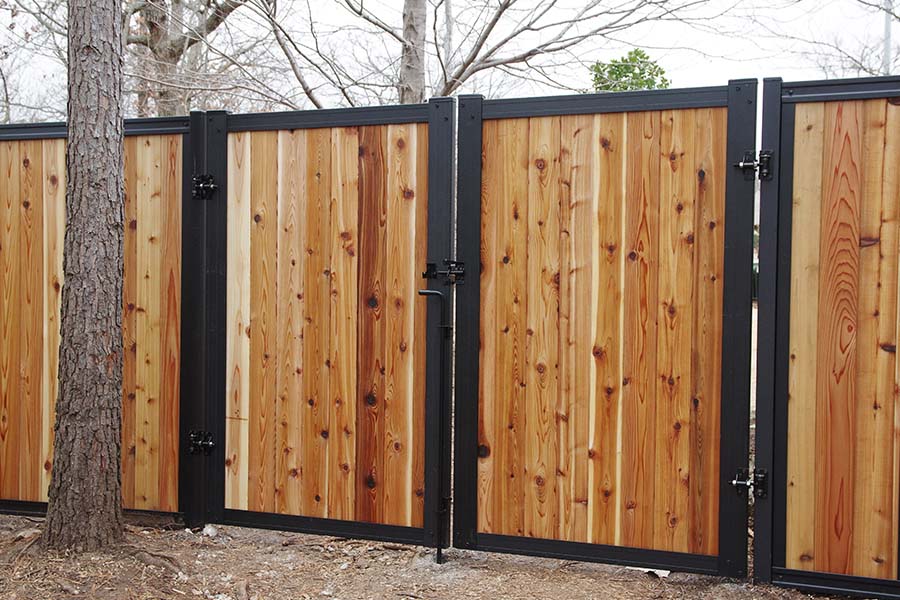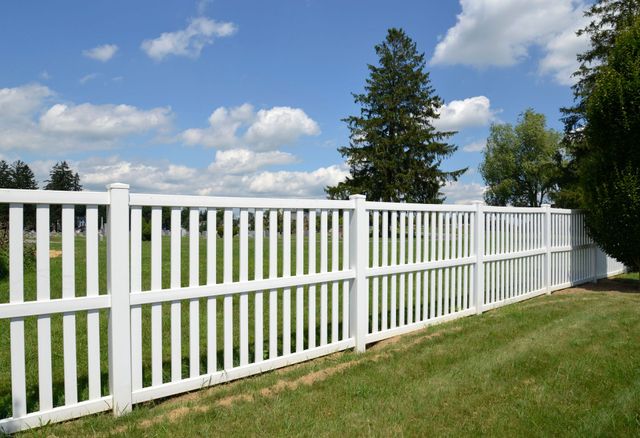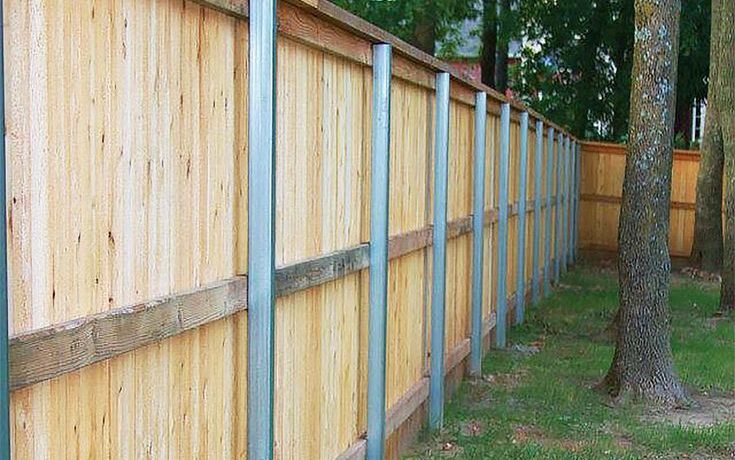All Categories
Featured

When it involves selecting the best fencing material for your home, vinyl, wood, and aluminum are amongst one of the most prominent choices. Each material offers one-of-a-kind benefits that match various demands, preferences, and budget plans. Understanding the pros and cons of each type can assist you make an educated decision based on your concerns, whether that's aesthetic charm, longevity, or upkeep demands. Listed below, we damage down the advantages and negative aspects of these 3 common fence materials.
Wood Fencing. Pros:
Visual Appeal: Wood fences provide a natural, timeless look that complements most sorts of landscape design and design. They can be easily tailored with paint or stain, offering you the liberty to develop the excellent color and finish for your home. Adaptability: Timber can be made use of to produce a selection of fence designs, from traditional picket fences to much more contemporary designs like privacy fences or rustic ranch-style fencings. It's simple to change or include to gradually if your needs change. Price: Wood is normally a lot more cost effective than plastic or light weight aluminum, making it an appealing choice for homeowners on a budget plan. The first cost of a timber fencing is typically lower than the other products. Disadvantages:

Upkeep Requirements: Timber fences require regular maintenance, consisting of staining, sealing, or paint to protect them from weathering, rot, and pest damages. Without proper treatment, timber can weaken promptly. Toughness: Wood is vulnerable to harm from parasites like termites, and it can warp, fracture, or split in time due to exposure to the components. In areas with extreme climate condition, timber may need to be changed much more regularly than other products. Minimal Life expectancy: While wood fences can last for several years with correct care, they normally have a much shorter lifespan than plastic or aluminum fences. Vinyl Fence. Pros:
Low Maintenance: One of the greatest advantages of plastic fencing is its low upkeep needs. Unlike wood, vinyl doesn't require to be painted, tarnished, or secured. It's immune to fading, breaking, or warping, making it optimal for homeowners that want a problem-free fencing. Longevity: Plastic fences are very sturdy and immune to the aspects, consisting of UV rays, rain, and humidity. They're additionally invulnerable to pests, such as termites, that can harm wood fences. Selection of Styles: Plastic fencings come in a vast array of shades and designs, and numerous simulate the look of timber without the maintenance disadvantages. You can choose from privacy fences, picket fencings, and more to match your needs. Lengthy Life expectancy: With appropriate care, vinyl fencings can last decades, much longer than wood fences, and they come with warranties that supply assurance. Disadvantages:
Greater Preliminary Expense: While vinyl fences can save cash on upkeep for many years, they often tend to have a higher in advance expense than wood fencings, which may be a deterrent for some purchasers. Restricted Personalization: While vinyl fencings are available in a selection of shades and styles, they do not have the modification flexibility that timber gives. You're restricted to the pre-designed panels offered, which might not match every special visual. Potential for Splitting in Cold Climates: In severe cold temperature levels, vinyl fencings can come to be fragile and might break under impact, making them less suitable for locations with freezing winter seasons. Light weight aluminum Fencing. Pros:
Toughness and Stamina: Aluminum is a lightweight yet strong material that withstands rust and deterioration, making it suitable for seaside areas or places with high humidity. Aluminum fences call for marginal maintenance and can endure the elements for lots of years. Visual Charm: Light weight aluminum fencings supply a streamlined, contemporary appearance. They are available in a variety of decorative styles and can be used to create an extra elegant or contemporary appearance for your residential or commercial property. Reduced Maintenance: Aluminum fencings do not need painting or securing, and they're immune to corrosion and corrosion, making them unbelievably reduced maintenance in time. Safety: Light weight aluminum fencings provide a greater degree of safety and security compared to vinyl or timber fences as a result of their tough building and construction. They can be equipped with locks and gateways to give a secure border around your building. Disadvantages:

Cost: Light weight aluminum fences are typically much more expensive than timber or plastic fences, both in regards to products and installation expenses. This greater cost point can be a drawback for budget-conscious house owners. Much Less Privacy: Aluminum fencings generally have a more open style, with pickets spaced apart to enable presence with the fencing. If privacy is a concern, this may not be the very best option for your property. Prone to Denting: While light weight aluminum is rust-resistant, it can still be nicked or bent if struck with force, such as by a lorry or hefty tools. While it will not rust, it may not preserve its pristine look if it obtains damaged. Which Material is Right for You? Selecting the ideal fencing material depends on your particular demands, spending plan, and long-lasting plans for your home. On the other hand, if you need a resilient, secure fence with a smooth look, aluminum could be the right product for you.
Inevitably, consider your climate, upkeep choices, and visual wishes when selecting your fencing product. Each choice has its toughness and weaknesses, however with the right care and setup, all 3 can give reliable and eye-catching borders for your home.
Latest Posts
Check Out the Best Auto Repair Discounts in Montclare, Chicago
Published May 27, 25
1 min read
Why Chicago Drivers Select Montclare Auto Repair for Reliable Service and Significant Savings
Published May 26, 25
1 min read
Find Out How WyHy Federal Credit Union Saves You Money on Loans and Savings
Published May 25, 25
1 min read
More
Latest Posts
Check Out the Best Auto Repair Discounts in Montclare, Chicago
Published May 27, 25
1 min read
Why Chicago Drivers Select Montclare Auto Repair for Reliable Service and Significant Savings
Published May 26, 25
1 min read
Find Out How WyHy Federal Credit Union Saves You Money on Loans and Savings
Published May 25, 25
1 min read